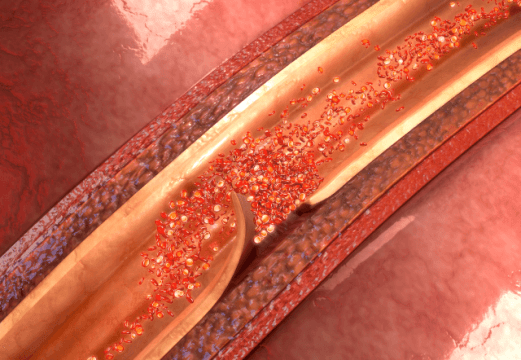Spontaneous coronary artery dissections (SCD) are more frequent in women and account for about 25% of all acute myocardial infarctions (AMI) before the age of 50.

While the presence of cardiogenic shock due to AMI is infrequent, its evolution is still somewhat unclear and it has not been fully analyzed.
Researchers conducted an analysis in 28 US states between 2015 and 2018 that included 664,292 women who met all the complete data for this study. Of the total, 657,649 (99%) patients had AMI without SCD (IWSCD), and 6643 had AMI with SCD (ISCD).
Patients with ISCD were younger (57 years old vs. 71 years old, p < 0.001) and had lower incidence of diabetes, chronic renal failure, heart failure, and COPD, although they had higher rates of ST-elevation AMI.
Hospital evolution for patients with ISCD saw higher rates of cardiogenic shock (9% vs. 5%, p < 0.01), but mortality was similar between groups (5% vs. 5.5%, p = 0.06). These did not change after adjusting for variables.
In cases where AMI was complicated by cardiogenic shock, mortality was lower in women with ISCD (31% vs. 39%, p < 0.01), while they more frequently received ventricular assist devices (17% vs. 10%, p < 0.01), IABP (45% vs. 28%, p < 0.01), ECMO (2.7% vs. 1.2%; p = 0.03). More PCIs were conducted in this segment (75% vs. 55%; p < 0.01).
Read also: Do Men and Women Present the Same Evolution after Left Atrial Appendage Closure?
In the multivariate analysis, the predictors of cardiogenic shock in patients with AMI and SCD were diabetes, COPD, peripheral vascular disease, heart failure, age >60 years, and ST-segment elevation myocardial infarction.
Conclusion
In this nationally representative series in the USA, among women admitted for acute myocardial infarction, researchers found that spontaneous coronary artery dissections have a high risk of developing cardiogenic shock and more frequently require ventricular assistance. In this sense, this group has a longer survival than women with acute myocardial infarction not caused by spontaneous coronary artery dissection.

Dr. Carlos Fava.
Member of the Editorial Board of SOLACI.org.
Original Title: Incidence and outcomes of cardiogenic shock among women with spontaneous coronary artery dissection.
Reference: Mohammed Osman, et al. Catheter Cardiovasc Interv. 2022;100:530–534.
Subscribe to our weekly newsletter
Get the latest scientific articles on interventional cardiology





